Review by Tim Robins
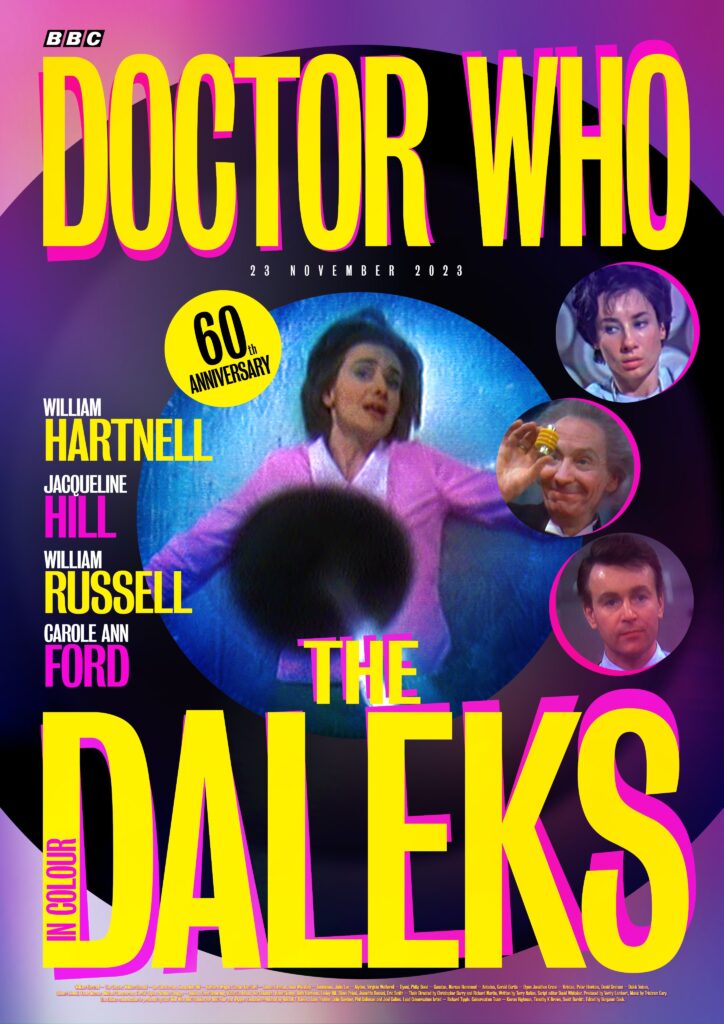
The BBC have launched a colourised and edited version of Terry Nation’s, seven-part Doctor Who story first broadcast in 1963, known today as The Daleks. The result was OK, and allowed me to view the story through a fresh pair of lenses (glaucoma is helpful in that respect).
The story sees The Doctor and companions arrive on the planet Skaro where the Daleks and the Thals must fight for survival. At the time of the programme’s making, the seven episodes were collectively known by the Doctor Who production team as ‘The Mutants’. This is a more apposite title, as both the Daleks and the Thals are mutated in different ways by radiation from a neutron war. The Daleks regard the Thals, sight unseen, as hideous mutations but, in a twist worthy of The Twilight Zone or The Outer Limits, the Thals look like us!
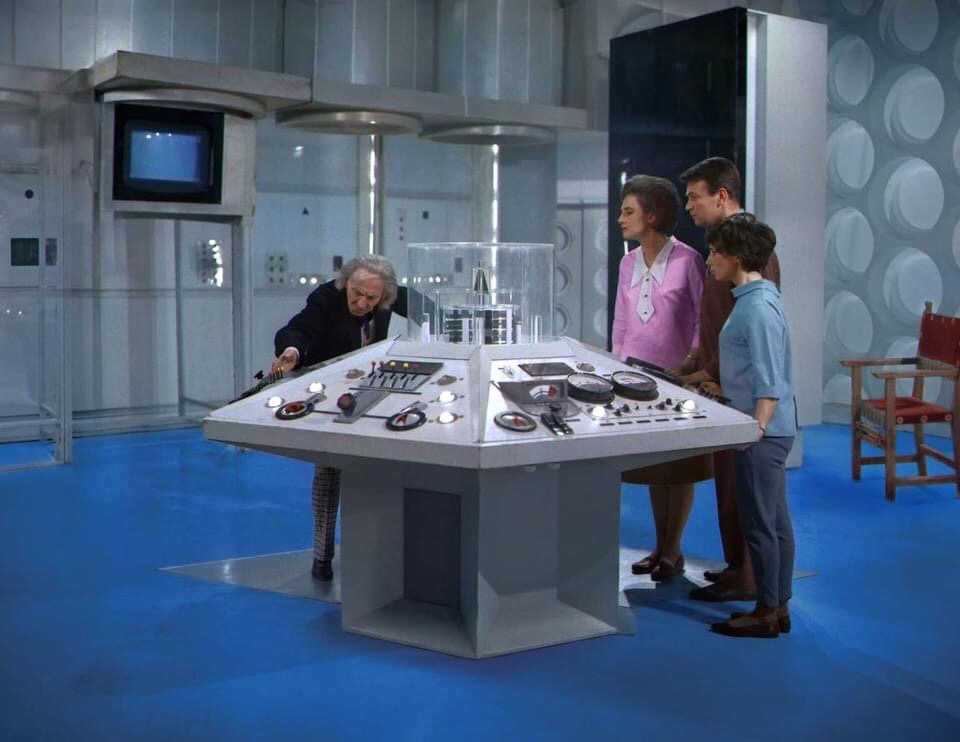
Thematically, The Daleks is one of the most misunderstood stories. The Dalek origin retcon, Genesis of the Daleks (1975) firmly represented the Kaleds, and by extension their creation the Daleks, as space Nazis. While it is entirely possible to interpret the Thals, the targets of extermination, as Jews, the original story is a little more ambiguous. For a start, the Thals have gone back to “blood and soil” to emerge as “perfect” (in Susan’s words). In effect, they’re portrayed as Aryans while the Daleks exemplify Hitler’s hated intellectuals and scientists who have evolved into disgusting minds, pure brains – the very opposite of Nietzsche’s ‘ubermensch’. Understood this way, The Daleks (and other Terry Nation dramas) represent what Susan Sontag identified as a fascination with fascism, exemplified in tales of struggle, heroism, self-sacrifice characterised with a sexual charge created in fantasy by sado-masocistic relations.
The story was adapted for cinema in 1965 as Dr Who and The Daleks, which was the only way to see the story in colour. The film is a bit goofy, starring Peter Cushing as a loveable grandfather, Dr Who (sic) and Roy Castle as the comic relief boyfriend of Barbara (Jennie Linden), one of Who’s granddaughters, the other being Susie (Roberta Tovey). For some, the adaptation has become a beloved alternative take on the story and, until now, the only way to see it in colour.
The new version of The Daleks is a demonstration of what a pair of digital scissors, an AI and a lot of effort can achieve. There are a lot of elements at work here, aside from the editing and colourisation. There’s a new music score by Mark Ayers and new Dalek dialogue, scripted by incoming showrunner Russel T Davies.
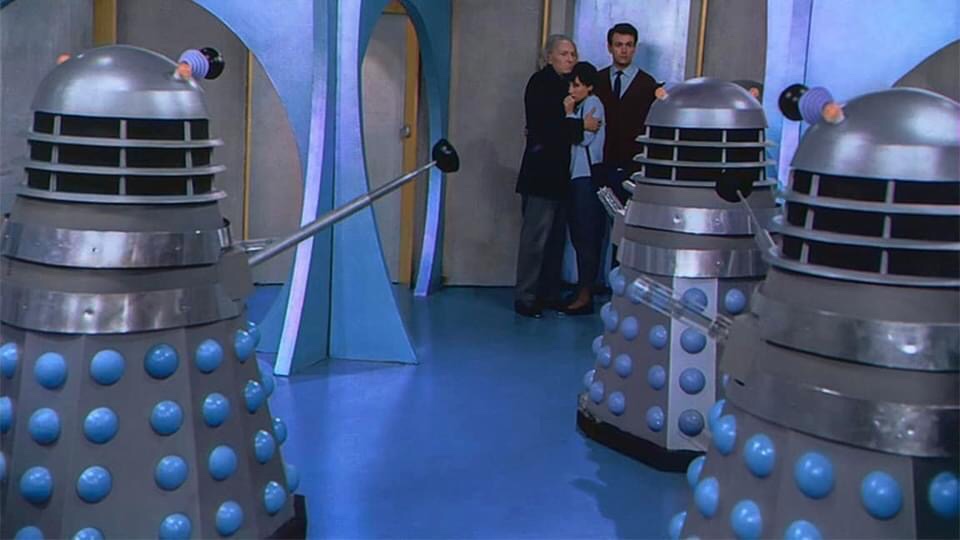
Coverage suggests it is the new, faster paced editing and the colourisation that are key to encouraging children to watch because you know what kids are like these days… er… the same as you and I were in those days? But this is the BBC’s view of children: the same BBC that scheduled a Peter Capaldi season after the 9.00pm “watershed”, then claimed the watershed didn’t exist and then watched as children didn’t decide to catch up with it on iPlayer the next day.
I first saw The Daleks (sic) in the late 1970s. To say that my mind was blown was an understatement. Contemporary Doctor Who looked cheap and silly in comparison. The effects achieved in 1963 certainly outstripped those that were currently on TV, and the scope of the story was nothing short of epic or at least audacious.
The coloured edit is at its best when it focuses on the lead characters, particularly William Hartnell, who is given a new lease of life for today’s audience. The ensemble cast act their hearts out. Carol Ann Ford as granddaughter Susan conveys the desperate fear she experiences as she is sent out, alone, to get anti-radiation drugs from the TARDIS. And what the heck were the BBC thinking, both then and now? This is not a story for children. The early scenes draw explicitly on the horror trope of using the camera to voyeuristically stalk and menace the female cast.
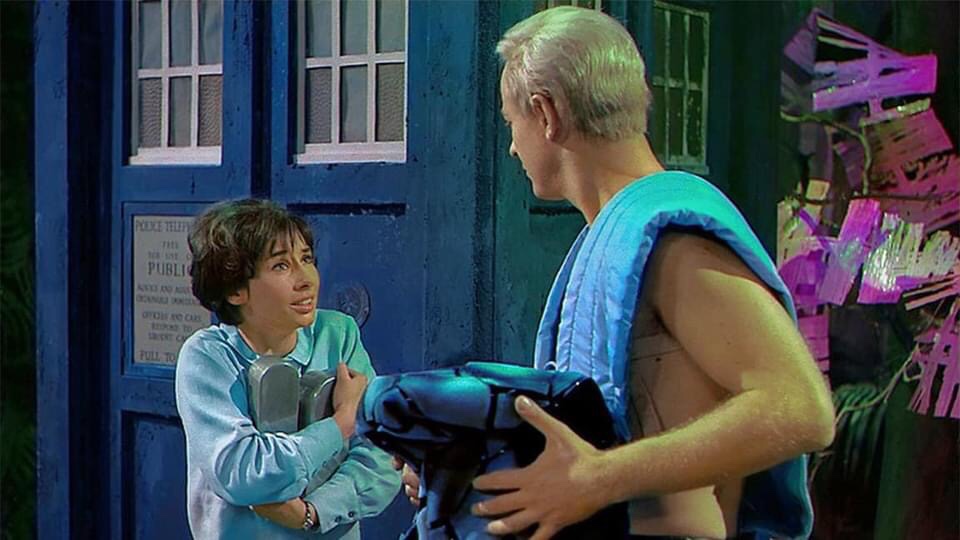
There have been a lot of decisions made in the production of the new cut, and I can only second guess why they were made. There are key scenes between Susan and the Daleks in the original that are cut. There are jarring ‘flashbacks’ added, which could suggest that the BBC think children can’t remember what they saw less than twenty minutes earlier. I wonder if the flashbacks were actually used to cover difficult edits or scene transitions?
The colouring receives creative thought. In the 1960s, sets, props and make-up were coloured to give the final on screen image a greater range of tone when broadcast back then in black and white – the most well-known example the TARDIS console being green. You wouldn’t necessarily want the new version to reflect those colours, although the green console lasted into the 1970s.
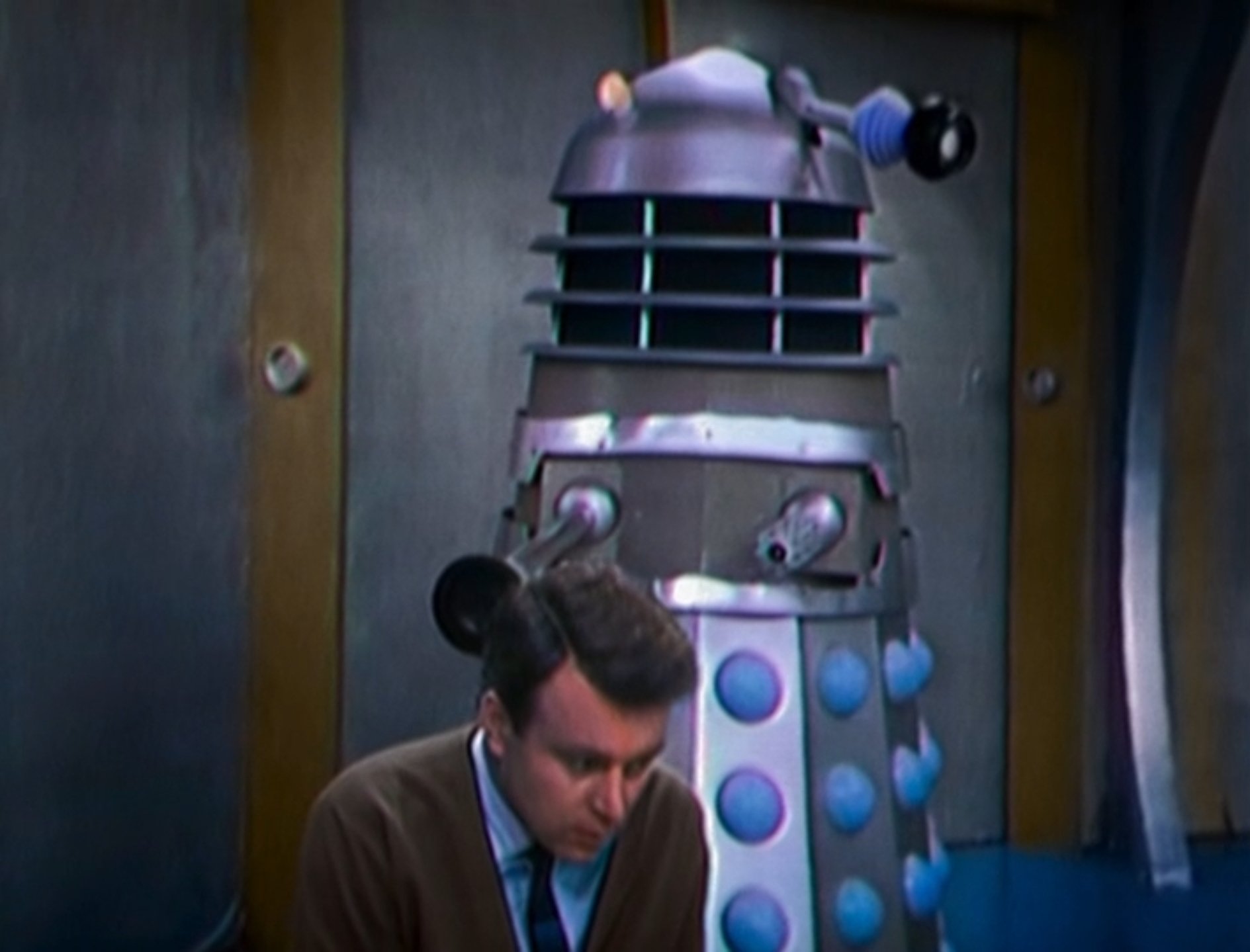
The new production has also adopted a colour theme – mostly blue – necessary to stop the story becoming a garish mess by unifying the scenes. I am not sure what the brown edging of the Dalek City’s wall was supposed to be; it sometimes looked like a cyberpunk bronze, sometimes cardboard and sometimes brown wrapping tape. Then again, the colouring of performers’ faces was pretty excellent.
The Daleks concluded with a trailer for yet more coloured-in Doctor Who adventures and I, for one, am up for that. As much as I love it, The Web Planet could easily be cut down to 30 minutes.
Tim Robins
The Daleks in Colour is available on BBC iPlayer in the UK, edited by Benjamin Cook, colourised by Rich Tipple, Kieran Highman, Scott Burditt and Timothy K. Brown. Music and sound design by Mark Ayres (adding to Tristram Cary’s original incidental music). VFX by design studio Painting Practice. With new Dalek voices by David Graham and Nicholas Briggs
• UK screening details are here on the BBC website
Further Reading…
• Gizmodo Australia (2021): How One Doctor Who Fan Brought Colour to the Show’s Classic Era
• Archive Television Musings Review: The Daleks in Colour
A freelance journalist and Doctor Who fanzine editor since 1978, Tim Robins has written on comics, films, books and TV programmes for a wide range of publications including Starburst, Interzone, Primetime and TV Guide.
His brief flirtation with comics includes ghost inking a 2000AD strip and co-writing a Doctor Who strip with Mike Collins. Since 1990 he worked at the University of Glamorgan where he was a Senior Lecturer in Cultural and Media Studies and the social sciences. Academically, he has published on the animation industry in Wales and approaches to social memory. He claims to be a card carrying member of the Politically Correct, a secret cadre bent on ruling the entire world and all human thought.
Categories: Doctor Who, Features, Other Worlds, Reviews, Science Fiction, Television
 In Review: Doctor Who – The Legend of Ruby Sunday/ The Empire of Death
In Review: Doctor Who – The Legend of Ruby Sunday/ The Empire of Death  In Review: Doctor Who – Rogue
In Review: Doctor Who – Rogue  In Review: Doctor Who – 73 Yards
In Review: Doctor Who – 73 Yards  In Review: Doctor Who – Boom
In Review: Doctor Who – Boom
On the whole I really enjoyed it. For me the new soundtrack was the weak link as by the end it became unignorable and didn’t give room for the dialogue to breathe (especially when the original soundtrack wasn’t one that needed a do over).
A fun experiment. Rumour is that they want to do The War Games next…